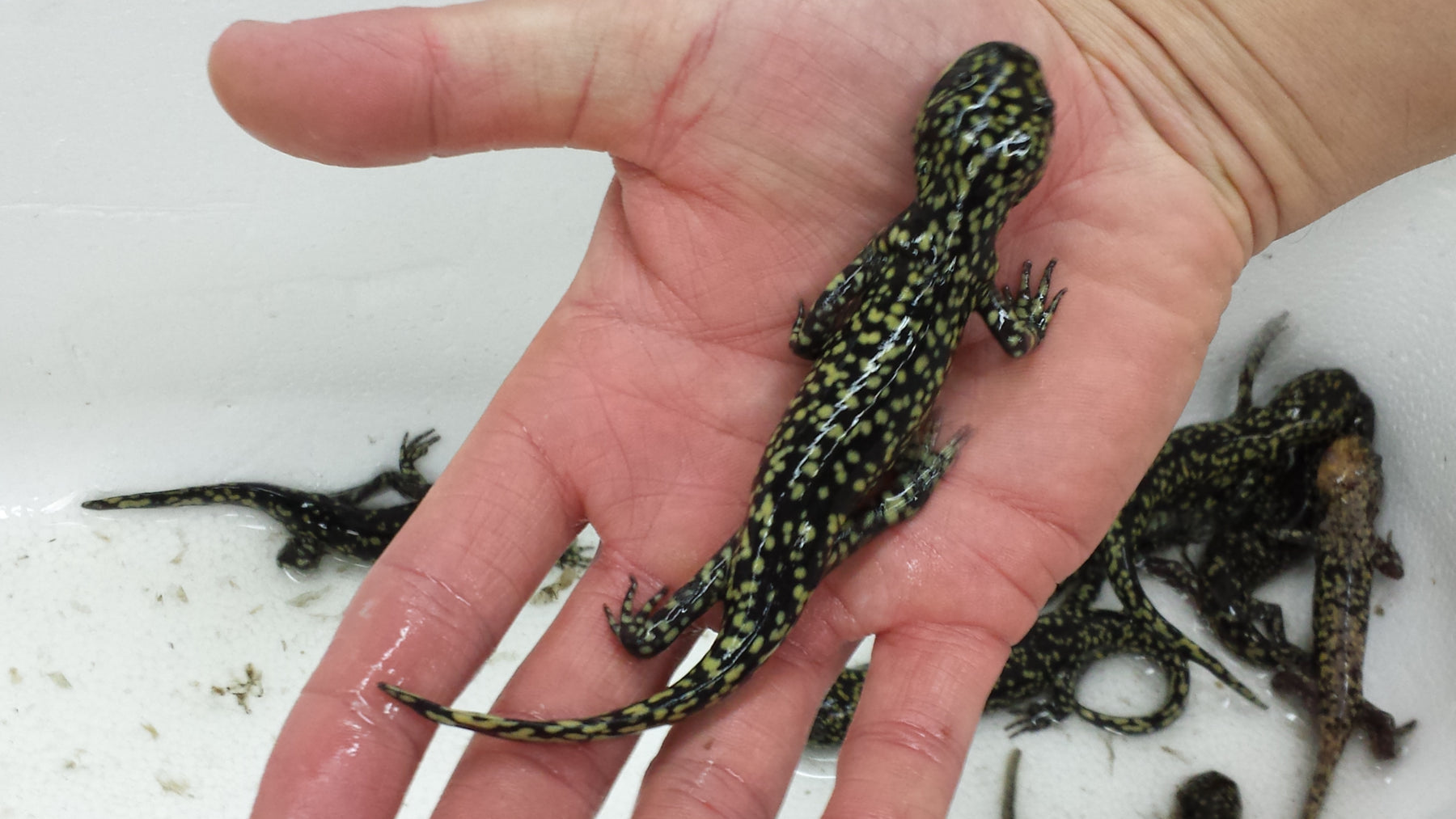
Salamander Care Sheet
The salamander is an amphibian that originates from Mexico. Being cold-blooded, they cannot produce their own body heat so their temperature will be the same as their surroundings. They have specialised skin that keeps them hydrated and allows them to extract oxygen from the water, so a high level of humidity is required. They also absorb all necessary water through their skin, so you not see them drink.
HABITAT: Your salamander will need a glass or plastic tank with a solid, fitted lid to keep the humidity in (vented or mesh lids are unsuitable, but a small gap is necessary for ventilation).
Ideally, the tank temperature should be kept around 19-20C. Damp sphagnum/peat moss is the ideal substrate as it promotes humidity, but pebbles may be used or a mixture of the two. Any pebbles must be large enough that they cannot be accidentally ingested.
A shallow de-chlorinated water pool should be provided which they can use to absorb water. Plants may also be used (e.g. ferns) to give shelter, moisture and a realistic environment.
A mister can be purchased from your pet shop which will keep your plants and salamander happy.
Remember to use de-chlorinated water in the mister too.
Salamanders like hiding place and a good idea is to put in a terracotta pot, layered with wet sphagnum moss on its side amongst some plants.
The tank and water must be cleaned regularly, don’t use chemical cleaners, just hot water and a clean sponge, to prevent fungal and bacterial infections.
DIET: Salamanders need to be fed a few times a week and live food is best as the movement encourages them to eat. It is also best to hand feed so you and be sure the food is being consumed.
The best foods are live crickets, super worms and black worms, all of which can be purchased from most pet stores. Collecting insects from your backyard is NOT recommended due to the possible use of pesticides.
All our salamanders have been weaned onto pellet food to aid in feeding.
HANDLING: When introducing the salamander to your home, try to keep it in a quiet, dark place for the first few days.
When it has become accustomed to you and its new surroundings, it should begin to feed.
Always remember the delicate and highly sensitive nature of their skin. Handle only with CLEAN WET HANDS. It is also important to remember to wash your hands after handling your salamander.
ENJOY YOUR FASCINATING NEW PET!
